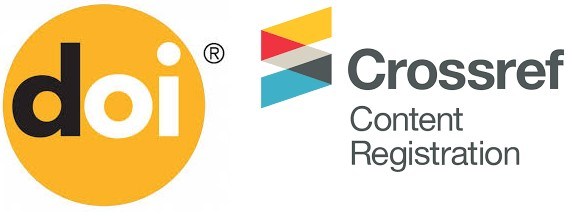Revision and submission guidelines
SPECIFICATIONS FOR ARTICLE SUBMISSION AND REVIEW
- ARTICLE SUBMISSION
Initial Review
The article submission process is done through the Journal’s website. In a first stage, the Editorial Committee will perform a general review of the work, and could directly reject, without external evaluation, those works that do not comply with the journal’s guidelines or that do not conform to the thematic areas of the journal. For this first review, the Editorial Committee may require the assistance, if deemed necessary, of the members of the Editorial Council.
Peer Review
Articles that pass this first filter will be sent to two evaluators external to the journal who are specialists in the field or the work’s research line. In case that evaluations are divergent, or for any other reason considered necessary, the Editorial Committee could send the text to a third evaluator.
According to the reports and recommendation of evaluators, the Editorial Committee could make one of the following decisions, which will be communicated to the authors:
Accept the submission
Accept pending minor modifications
The article requires major modifications and a new review
Reject the submission
If the editorial decision about an article is to “Accept pending minor modifications”, the author has a specific deadline to modify their article. After reception of the author’s modifications, the Editorial Committee will have 30 business days to have a definitive resolution. In case the editorial decision is that “it requires major modifications”, once these modifications are performed, the article goes through the evaluation process again, and may need minor modifications in order to be considered as accepted.
Edition and Publication
In the case of the articles accepted for publishing, they will be sent to the layout process, and will be assigned to the corresponding issue by the Editorial Committee.
All edited articles will be published in the volume, where it will be identified with the DOI assigned by the platform.
- TYPES OF ARTICLES
RECHIEM welcomes:
2.1 RESEARCH ARTICLES
Empirical research articles: The manuscripts that report on original empirical research related to phenomena and problematics of the didactics of mathematics. They must include justification for the interest on the research topic and the originality of the research in the area; a review of relevant literature for the research topic and theoretical foundation; clearly defined methods and analysis in agreement with the declared purpose; results and a discussion that emerges from the data presented on the manuscript; and conclusions in relation to the contributions of the research.
Review Articles: Articles that sum previous empirical research in the field of didactics of mathematics, discuss methodological or theoretical problems or the implications of educational policy in the field. Manuscripts must specify the literature selection procedures and the criteria for their grouping and analysis.
Theoretical articles or essays: Articles that propose a reflection on a theory related to the didactics of mathematics; discuss two or more theories of the area from an innovative perspective; or propose a new and original reflection about a phenomenon or problem related to the author’s own theoretical elaboration or based on other authors’ theories. It is expected that this type of work is oriented towards a thesis or hypothesis that organizes the presentation of the work contents. Unlike empirical research articles, theoretical articles or essays can follow a more flexible presentation structure, but must have sections such as introduction, development and conclusions, and include other sections defined by the journal: title, abstract, keywords and references.
2.2. DIDACTIC PROPOSAL ARTICLES
These are articles that contain practical guidelines and contribute to the novelty and relevance of teaching and learning of mathematics or planning. The proposal must be supported by a solid theoretical foundation, considering conclusions, results and implications of previous didactic research related to said proposal. It must contain context description (where, how and with whom this has been practiced, variables considered, methodologies used in the classroom); obtained results (results of the implementation of the presented proposal are described and analyzed, applying one of the currently accepted methodologies by the community of didactic of mathematics). It must include the results of the practice implementation. Conclusions must be supported by the obtained results and the contributions of the proposal (describe how the performed experience contributes to current didactic knowledge, in terms of possible extrapolation, learning improvements, methodologies or teacher education, among others). It should also include the limitations of the proposal, considering possible specific conditions of the performed experience.
- MANUSCRIPT PREPARATION
General Publishing Norms for authors (PDF)
The manuscript must be completely anonymous, this is, it should not contain any information that refers to authors (this includes deleting the digital identification of the file in the “file properties” section) and comply with format: Rechiem Template (DOC)
- Title(spanish/english): maximum of 10 words, including articles and prepositions.
- Abstract(spanish/english): it must have a maximum of 200 words in only one paragraph. It must specify the objective of the research, main theoretical and methodological aspects, and the most relevant results and conclusions. It does not include references.
- Keywords(spanish/english): Three to five words, separated by a semicolon.
- Main Body:Articles must be written using 12 pt. Times New Roman font, single spaced, justified, with 2.5 cm. wide and 3.0 cm. long margins, in Word format. All pages must be numbered. Articles must follow APA 6th edition style guidelines. Tables and figures must be clear and embedded in the article (please, use only 10 pt. Times New Roman font, single spaced). Figures must be in JPG. format. If the article contains formulas, they must be created with Word tools.
- Bibliographic references: They include all works cited in the text, and at the same time all works included in this section must be referenced in the article’s body. Bibliographic references must follow APA 7th edition style guidelines.
- Extension:Articles must have a maximum of 8000 words, including title, abstract, bibliographic references, tables and figures.
- Blind review: To ensure the integrity of the blind review of the manuscript, the authors must register their own work anonymously as (Author, Year). Any acknowledgements and project name or number must be deleted from all sections of the document. Likewise, complete references of any of the authors in the Bibliographic References section must be eliminated.
In a separate file a Title Page must be prepared, containing: (Title Page Template (DOC))
- Title of the article;
- declaration that the material is original and unpublished, and not under review for another publication (it must be clearly stated if the material has been previously presented in congresses and has appeared in summary form (maximum of six pages) in the memoirs of these events);
- name, institution of affiliation (including campus, department, school or division, according to institutional organization), e-mail, telephone number, full address (including postal code), and the author’s or authors’ ORCID number;
- acknowledgement of individuals, scholarships or organizations that funded the research.
At the time of submission, the following information must be properly registered in the metadata section of the manuscript submission platform: Name(s) of the author(s), e-mail and its affiliation institutions. Funding of the research and corresponding author must also be indicated.
- AUTHORSHIP AND AFFILIATION
- Once the article is approved, no authorship and co-authorship changes are accepted, or modification of the number of authors. All authors must be entered at the time of article submission.
- If the author(s) changes affiliation after the article is accepted, they can request that a note is added to the foot of the page with the new information.
- Once the article is published, there will be no changes in authorship or affiliation.










